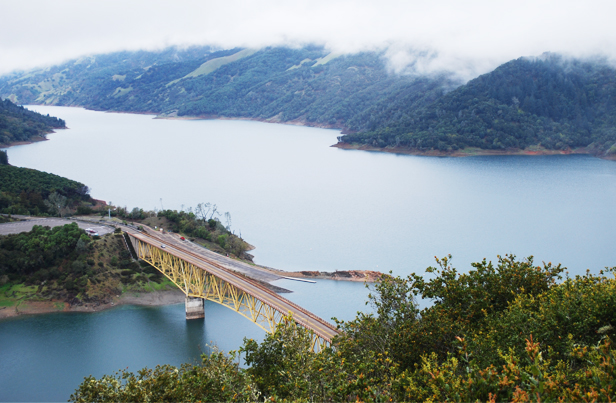

To help decision makers better prepare for and respond to climate-related impacts and extreme events, CPO’s Sectoral Applications Research Program (SARP) will fund six new two-year projects in FY16 for a total of $1.4 million.
SARP supports interdisciplinary research that advances the understanding of how climate variability and change affect key socioeconomic sectors and promotes the application of this new knowledge in climate-related decisions. Working with scientists and decision makers—such as resource managers and policy leaders—SARP helps develop new tools and methodologies that they can incorporate into decision-making scenarios. The goal is to help decision makers better prepare for and respond to climate-related impacts.
SARP’s current foci include working with decision makers within the water resource and community management as they prepare for more intense and frequent extreme events.
This year’s SARP grants are divided into two important themes: Preparing for Anticipated Near-Term Extreme Precipitation Events and Planning for Future Extreme Events. There will be no SARP competition in FY17.
The projects focusing on near-term extreme precipitation events will work to:
- Develop a climate focus within community multi-hazard planning, including frameworks for reducing impacts of anticipated extreme events and building resilience for future events (i.e., mainstreaming and/or customizing climate information for decision making).
- Identify and/or create methodologies to determine the costs of impacts, the benefits of adaptation options and/or the costs of inaction (including the avoided costs of damage to enhance preparedness) to justify selection of adaptation measures for water resource planning.
- Identify innovations including socioeconomic and institutional mechanisms (e.g., utility involvement in novel configurations of land use, regional collaborations, etc.) that would increase adaptive capacity.
The projects planning for future extreme events will work to:
- Identify/develop methodologies for anticipating and planning for decision ‘Tipping Points’ (or thresholds) in the context of emerging extreme events.
- Understand/communicate methods or approaches for including climate science in comprehensive planning documents and activities (e.g., master, watershed, state plans, etc.).
The six new projects to be funded under SARP in FY16 include:
- “From Precipitation Thresholds Identification to Planning: Helping Communities Plan and Adapt to Future Extreme Events,” PIs: Dr. Christine Kirchhoff, Juliana P. Barrett, Bruce Hyde, and Amy C. Burnicki, University of Connecticut; Dr. Radley Horton, Northeast Climate Science Center; Jonathan J. Reiner, Town of Groton Planning and Development Services; and Megan Saunders, Stamford2030.
- “Indigenous Climate Change Adaptation: Policies and Processes that Help and Hinder Alaska Native Villages Address Flooding, Erosion, Species Shifts, and Disasters,” Funded in conjunction with CPO’s Arctic Program. PI: Elizaveta, Ristroph, private consulting.
- “Incorporating Local Climate Science to Help Communities Plan for Climate Extremes,” PIs: James C. Schwab, American Planning Association; Louise Yeung, Chicago Metropolitan Agency for Planning; James Angel, Illinois State Climatologist, University of Illinois-Champaign; Mary Woloszyn, Extension Climate Specialist, Illinois-Indiana Sea Grant & Midwestern Regional Climate Center.
- “Increasing the Capacity for Municipal Climate Adaptation Planning in the Lower Missouri River Basin States,” PIs: Dr. Martha Shulski, High Plains Regional Climate Center, University of Nebraska-Lincoln; Tarik Abdel-Monem, J.D., Dr. Zhenghong Tang University of Nebraska; Natalie Umphlett, High Plains Regional Climate Center, University of Nebraska-Lincoln, Collaborators: Frank Uhlarik, City of Lincoln – Public Works and Utilities.
- “Critical infrastructure and Future Flood Resilience in South Florida: Developing Methods for Direct and Indirect Flood Impact Assessment,” PIs: Dr. Edwin Welles and Karel Heinert, Deltares USA; Dr. Laurens Bouwer, Hanne van den Berg, and Dr. Marjolein Mens, Stichting, Deltares (Netherlands); Jeff Kivett, P.E. and Dr. Jayantha Obeysekera, South Florida Water Management District; and Dr. Jennifer Jurado, Broward County, Florida.
- “Competing Water Use in the Face of Climate Change: Integrated Analysis to Support Water Resource Planning for Extreme Events,” PI: Zhaoqing Yang, Pacific Northwest National Laboratory
SARP is a program in the Climate and Societal Interactions Division of the Climate Program Office, within NOAA’s Office of Oceanic and Atmospheric Research. To learn more about SARP and it’s funding opportunities, visit: cpo.noaa.gov/SARP.
For a full list of CPO’s grants and awards for 2015, visit: http://cpo.noaa.gov/AboutCPO/AllNews/TabId/315/artmid/668/articleid/617026/Default.aspx
NOAA’s Climate Program Office helps improve understanding of climate variability and change in order to enhance society’s ability to plan and respond. NOAA provides science, data, and information that Americans want and need to understand how climate conditions are changing. Without NOAA’s long-term climate observing, monitoring, research, and modeling capabilities we couldn’t quantify where and how climate conditions have changed, nor could we predict where and how they’re likely to change.





